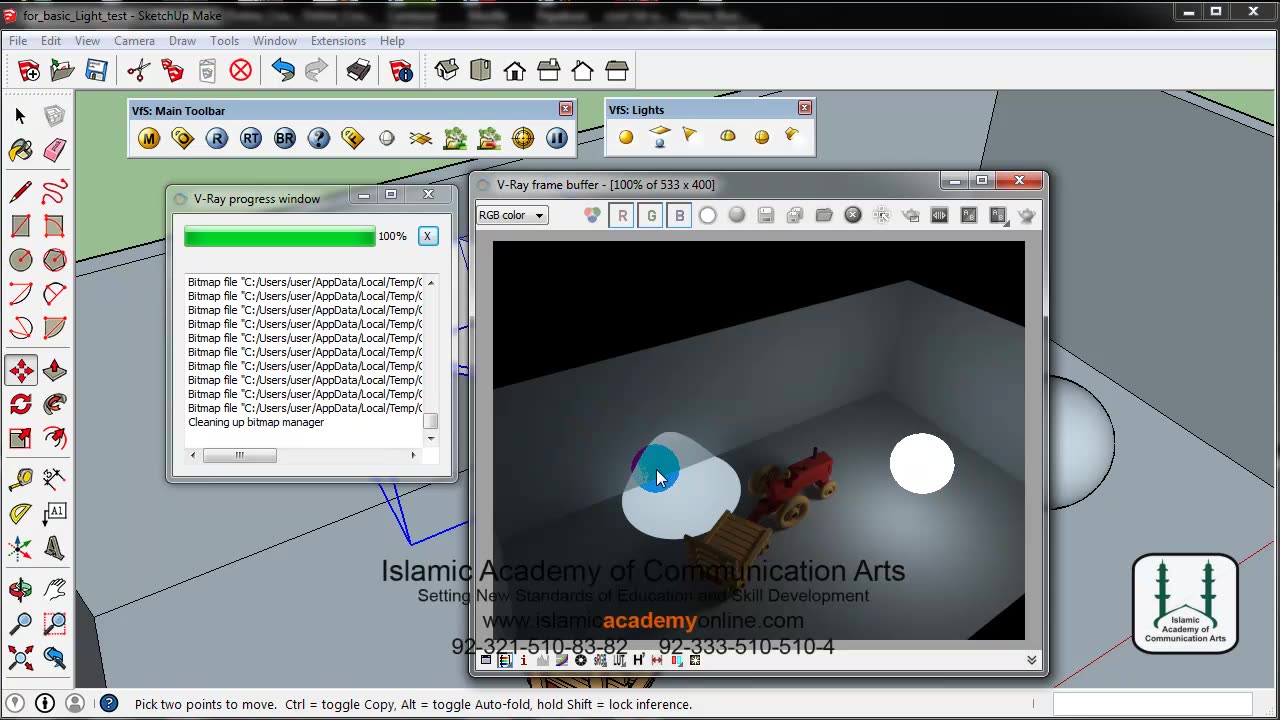Premium Only Content

V-Ray is a powerful rendering software widely used in the architecture, design, and visual effects industries. It is known for its advanced capabilities in producing highly realistic and visually stunning renderings.
With V-Ray, users can achieve accurate lighting, materials, and textures to create lifelike and immersive visualizations. It offers a range of features and tools that enable artists and designers to achieve their desired results with precision and efficiency.
Some key features of V-Ray include:
Global Illumination: V-Ray accurately simulates the behavior of light in real-world environments, allowing for realistic lighting and shading effects.
Advanced Material System: V-Ray provides a wide range of material options, including reflective surfaces, translucent materials, and physically accurate materials like glass and metal.
Realistic Textures: The software allows for the creation and application of detailed and realistic textures, enhancing the visual quality of rendered scenes.
Efficient Rendering: V-Ray optimizes rendering times through advanced algorithms and distributed rendering capabilities, allowing for faster and more efficient production workflows.
V-Ray Denoiser: This feature helps reduce noise in rendered images, resulting in cleaner and smoother final outputs.
Integration with 3D Modeling Software: V-Ray seamlessly integrates with popular 3D modeling software such as Autodesk 3ds Max, SketchUp, Rhino, and Revit, making it a versatile rendering solution.
Overall, V-Ray is widely regarded as a leading rendering software due to its robust feature set, flexibility, and ability to produce highly realistic and professional-quality renderings.
-
 1:31:16
1:31:16
TheDozenPodcast
20 hours agoSwinging, cheating and adult parties: Jem & Daz 🍍
22.3K7 -
 7:35
7:35
Gun Owners Of America
18 hours agoTrump Promised To Sign This Bill
16.9K10 -
 18:20
18:20
Bearing
1 day agoSimp Gets BRUTALLY DESTROYED By His Crush 💔
16.1K24 -
 4:11:09
4:11:09
Film Threat
1 day agoGOLDEN GLOBES WATCH PARTY 2025 | Film Threat Awards LIVE Coverage
77.5K6 -
 3:40:42
3:40:42
MyronGainesX
16 hours agoFormer Fed Explains The Torso Killer
137K14 -
 2:43:18
2:43:18
Nerdrotic
15 hours ago $19.61 earnedCybertruck Explosion Rabbit Hole | Forbidden Frontier #086
113K31 -
 3:28:23
3:28:23
vivafrei
21 hours agoEop. 244: FBI Seeks HELP for Jan. 6? FBI Taints New Orleans Crime Scene? Amos Miller, Lawfare & MORE
251K373 -
 2:27:48
2:27:48
Joker Effect
14 hours ago2025 already started up with a bang! Alex Jones, Bree, Elon Musk, Nick Fuentes, Fousey
65.1K19 -
 7:51:47
7:51:47
Vigilant News Network
20 hours agoEXPOSED: Secret Government Plot to Deploy Aerosolized ‘Vaccines’ Using Drones | Media Blackout
134K57 -
 1:13:49
1:13:49
Josh Pate's College Football Show
16 hours ago $14.20 earnedSemifinal Predictions: OhioSt v Texas | Notre Dame v PennSt | Playoff Cinderella | Alabama’s Future
95.7K4